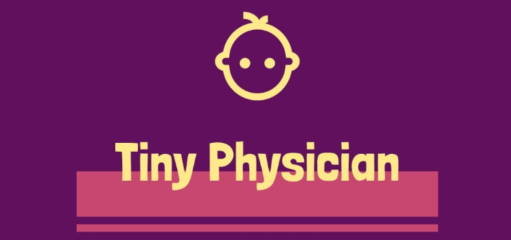By the end of their internship a few undergraduate medical students would have decided on their favorite branch for residency, based on the limited experience that they had during their internship. A few others would have decided on whether to go into a surgical or non-surgical field, even though they might not be able to pinpoint their favorite branch, and the remaining are mostly clueless people.
By the end of my internship, I was quite interested in Internal Medicine (IM) and wanted to pursue the same for my residency. I wasn’t very confident about my surgical skills and I wanted a non-surgical branch and my IM faculties were very inspiring. However, I ended up in Pediatrics, a branch in which I wasn’t very comfortable due to multiple reasons.
Yeah, I knew that it is also a non-surgical branch and I would be able to deal with all organ systems like an IM specialist, but despite that, I wasn’t very confident when I joined my residency. I couldn’t see myself as a Pediatrician in the initial months; nevertheless, as time passed, I understood that it is a branch where I can fit in even though it is different from IM. This article is for those who are perplexed between IM or Pediatrics and want to know more about the subject in detail and the possible circumstances that they will have to face during residency.
The patient population

This is probably the most obvious difference between these two branches. The pediatricians provide their services to young population (less than 13 years as a general rule) and the IM takes care of the rest. This demarcation has been set for the reason that; a child can’t be attributed as a tiny adult. Their physiology, spectrum of diseases and nutrition are totally different from that of an adult. An IM expert can’t deal with all the diseases of pediatric population as some diseases are only present in pediatric population and vice versa. The age cut-off is slightly different for pediatric sub-specialties and it is usually 18 years.
On a funny note, now I feel allergic whenever adults come to me for treatment of some ailments as now I am used with pediatric patients.
Stress at work place
The rule of thumb is that IM will be a less stressful field to practice medicine on than Pediatrics since the health of the child is always an extremely sensitive issue. An adult patient may bear little discomfort but the parents or caretakers will create a ruckus at the hospital if they feel that their child is not improving with your treatment, sometimes despite your proper counselling regarding the health condition. Death of an elderly person may not create trouble at the hospital normally but the demise of a 7-year-old child can cause problems from agitated bystanders if not handled well. This doesn’t mean that caretakers will always blame the doctor for the death of their child; however, counselling and briefing the parents about the condition of the patient is required frequently in Pediatrics, more so than in IM. After all, it’s their child and irrespective of the morbidity and grave prognosis, they always expect their child to improve.
Unlike adults, the examination of kids is not very easy. Kids cry for no obvious reason and sometimes for reasons which matter only to them, making it difficult to palpate or auscultate with a stethoscope. Pediatricians need to have a way to work with kids. Toys and chocolates can do wonders in making a child cooperative during the examination and these kinds of practical problems are rarely faced by IM residents.
Dealing with parents or caretakers

In Pediatrics, we trust the parents for drug administration and dietary changes at home. Unlike in adult patients, objective assessment is a little more difficult in children and at times, we will have to believe the parents and do further examination or investigations even if our initial examination didn’t reveal any disease. In many cases in Pediatrics, the only symptom will be irritability of the child and only the mother will be able to identify that. One of my faculty members once told: “If the mother says her child is sick, unless proved otherwise, the child is sick and you have to do a thorough examination to find out the cause”. History of the presenting complaint will be given by the mother and you need to have a good rapport with the parents to obtain relevant details of the illness. Unlike in IM ICUs, Pediatric ICUs will allow the mother to sit along with her kid and hence, the resident on duty at PICU will have to be more vigilant as there are mothers who will observe your actions and may misinterpret.
Treatment delivery

Since adults generally weigh more than 40 kilograms and tolerate mild dose discrepancies of various medications, there are blanket dosages for almost all medicines contrary to dosing in Pediatrics, where we use a per-kilogram dosing method. Not just drugs, each ml of intravenous fluid or transfusion product can make a difference in a child; consequently, everything that we administer to a patient of pediatric population needs to be measured beforehand. Unlike popular perception, it is easy to remember the dosages of the Pediatric population as you get used to it. There are standard prescribers available in book stores to help the residents. On a lighter note, we pediatricians don’t actually remember the concentration of some of the tablets available in market as we prescribe syrups generally.
Cannulation is more challenging in kids, especially in preterm babies and chronic patients. There are instances in which the resident will have to resort to intra-osseous route for administering intravenous fluids and drugs. Phlebotomy for routine investigations is another major challenge that a resident of pediatrics have to encounter every day. It is not just about finding a good vein to prick in order to obtain blood, but also to deal with the irritating bystanders who will keep on pester you whenever the baby cries. We always have to think about strategies to minimize the total number of pricks and that’s a predicament that a pediatric resident have to deal with.
Sub-specialties
Even the first year MBBS student knows the sub-specialties in IM, at least the famous ones. Undergraduates set their dream as a cardiologist right from first year of medical school, even before they understand the meaning of the term Cardiology. Contrary to that, not many have an idea about the sub-specialties in Pediatrics. There are sub-specialties like Pediatric neurology, Pediatric cardiology, Pediatric nephrology, Pediatric Pulmonary medicine and critical care, Neonatology, Pediatric oncology, Pediatric endocrinology etc. Nevertheless, the total number of seats altogether for pediatric sub-specialties in whole India will be less that of the total Oscar awards won by Indians. Consequently, only a few bright post-graduates get the opportunity to pursue their DM course in a dedicated pediatric sub-specialty seat. A few people opt for adult sub-specialty seat and after completing their DM, they practice as pediatric sub-specialists. Fellowships are an alternate for DM which is well accepted in pediatrics.
In second year of your residency, we do have sub-specialty postings, but not as lengthy as compared to IM. Not many medical colleges have pediatric sub-specialties and I was fortunate that my institution had almost all sub-specialty departments.
Emergencies

The pediatric and adult emergency scenarios are totally different. In adults, vascular events like myocardial infarction and stroke, hypertensive emergencies, alcohol abuse and related complications, exacerbation of COPD and Asthma etc. form a major chunk of casualty cases, apart from the uncles who pay a visit just to measure their blood pressure. Pediatricians, on the contrary, encounter a lot of febrile seizures, wheeze exacerbations, viral exanthems, and accidental ingestion of various liquids (especially kerosene). In casualty, we have to ensure that the child is fine before discharge as children are very fragile and they can collapse quite easily as compared to adults. Even an acute diarrhea, which usually settles spontaneously in adults, can be detrimental for the health of the child.
In short, both are nice branches even though there are numerous obvious differences. Pediatrics is slightly more demanding than IM but, having said that, that shouldn’t be the only criteria. Trust me, even if you land up in a branch which wasn’t your choice, you still can be an outstanding doctor if you have excellent work ethic. I never thought I can deal with kids but I was proved wrong. You just have to love the place where you are, even if it takes time, effort and a major commitment.
You can follow Tiny Physician in Facebook, Instagram, and Twitter. To send a DM, use Telegram.




